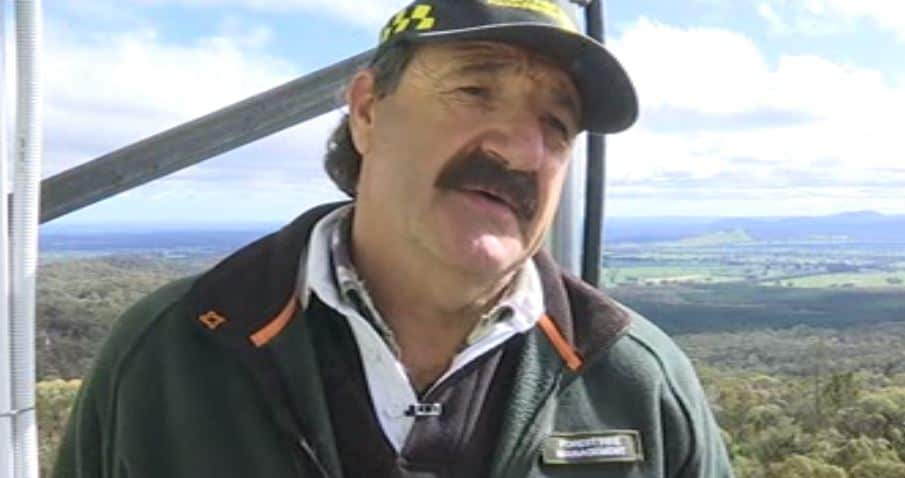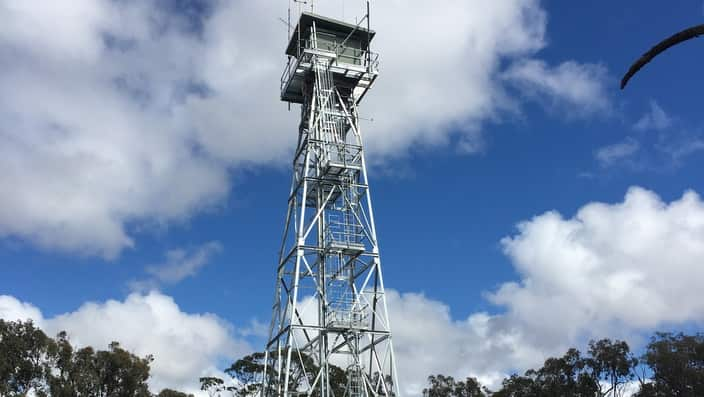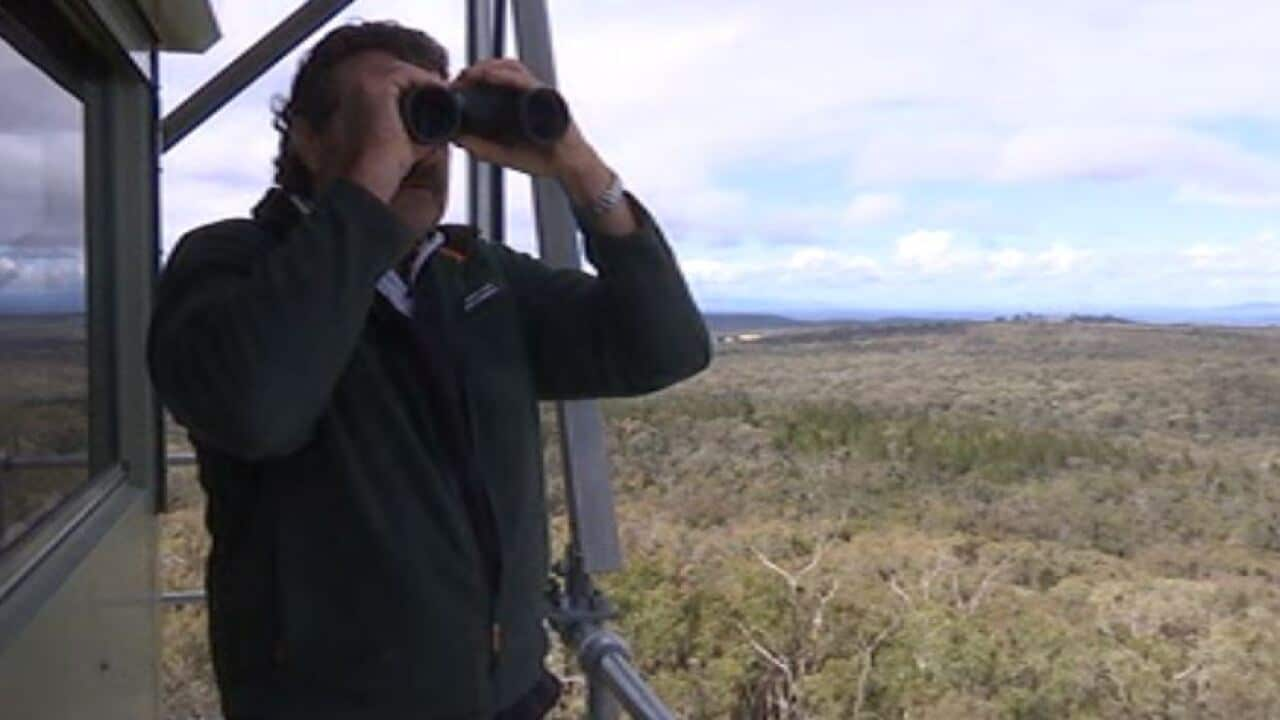Veteran fire spotter Gordon Habeck's working day begins with a slow and steady 20-metre climb.
The 60-year old regularly mans the fire lookout tower at Mount Barambogie near Chiltern, in Victoria’s fire-prone north east.
It’s not everyone’s dream job; it's lonely, exposed to the elements, and on some days not much happens - but Mr Habek says the busy days are worth waiting for.
“I hang out for a big day... tracking thunderstorms, lightning, that sort of stuff," Mr Habek told SBS News.
“But the ones that worry me are [when there is] extreme hot weather and extreme wind.” His 'office' sits above a canopy of Alpine country gums near Mount Barambogie. On a clear day, the tower boasts views as far as Mount Bulla and Mount Buffalo - but there's little time to enjoy the panorama.
His 'office' sits above a canopy of Alpine country gums near Mount Barambogie. On a clear day, the tower boasts views as far as Mount Bulla and Mount Buffalo - but there's little time to enjoy the panorama.

Mr Habeck's day starts with a 20-metre climb. Source: SBS News
Most days, Mr Habeck clocks on at around 11am and for the next nine hours surveys the surrounding area for evidence of smoke. It's tiring work.
“You come up here in the bad weather... expecting something to happen. You're basically working the binoculars non-stop... all day," he said.
"It tires you... you go home with your eyes just about popping out of your head [and] they're all bloodshot.”
RELATED READING

Populated areas at risk of bushfire this season
Despite the strain on his eyes, Mr Habeck says the work is ultimately rewarding, and it requires someone with experience.
“If you put someone new in here, they'll be reporting dust, they'll be reporting [agricultural fertilisers'] super or lime being spread because they haven't picked up the knowledge...”
Chemicals being spread in the distance can have the appearance of smoke. When he spots something legitimate, it's his job to call in the fire service.
When he spots something legitimate, it's his job to call in the fire service.

Mr Habeck says the job requires someone with experience. Source: SBS News
"If I see a puff of smoke... I can tell them where it is," he said.
"That's a good feeling... I know they are going to have trucks there really, really quick.”
Mr Habek's work is paid and seasonal; he's usually required between October and March.
He says his greatest challenge was tackling the 2003 Victorian Alpine fires which razed about 13,000 hectares and destroyed 40 homes.
“We spotted it early but it was the season where there was multiple fires in the high country and resources were very, very thin on the ground... once it got going, there was no stopping it.” The Mount Barambogie tower is one of 72 in Victoria and has coverage over almost 800,000 hectares, including the Indigo and King Valleys.
The Mount Barambogie tower is one of 72 in Victoria and has coverage over almost 800,000 hectares, including the Indigo and King Valleys.

The fire lookout tower at Mount Barambogie, Victoria. (Luke Waters / SBS News) Source: Luke Waters / SBS News
Much of that is national park and state forest - but it also covers agriculture and tourism assets vital to the gourmet and winery precincts of Victoria's North East.
A study published in the journal Royal Society Open Science in 2016 found the number of bushfires per week in Australia increased by 40 per cent in the five years up to 2013.
In 2009, 173 people died in Victoria's Black Saturday bushfires. Those fires were the most devastating in Australian history.
Jarrod Hayes is the manager of the Ovens Fire District and says while more advanced methods like aerial observations play a big role in fire detection and suppression, the spotters are "critical".
“It may seem a bit arbitrary that it takes an individual at the top of the tower to detect fire, but with all the technology, a person detecting fire is still the best way that we can identify a fire and get good information on that fire,” Mr Hayes said.
In the event of an emergency call Triple Zero (000).
Share



